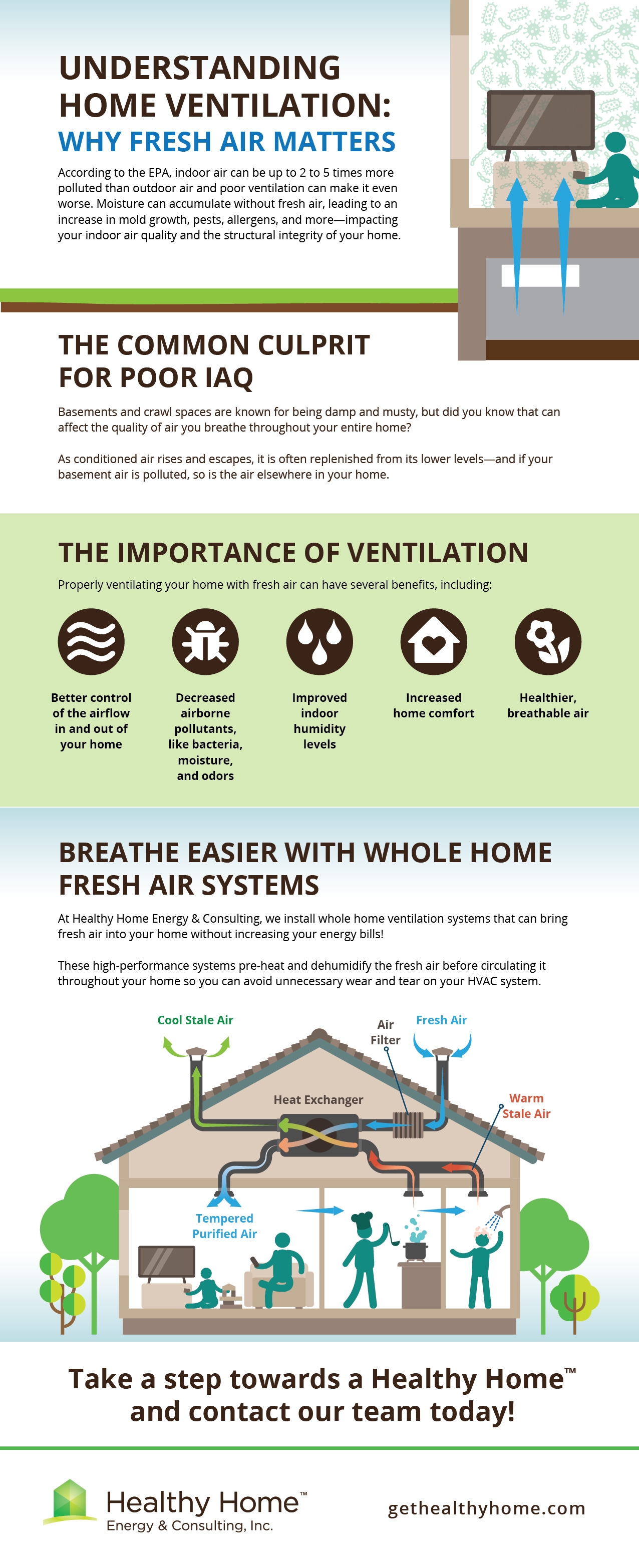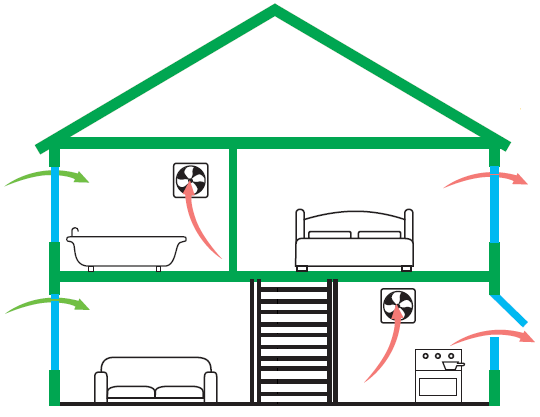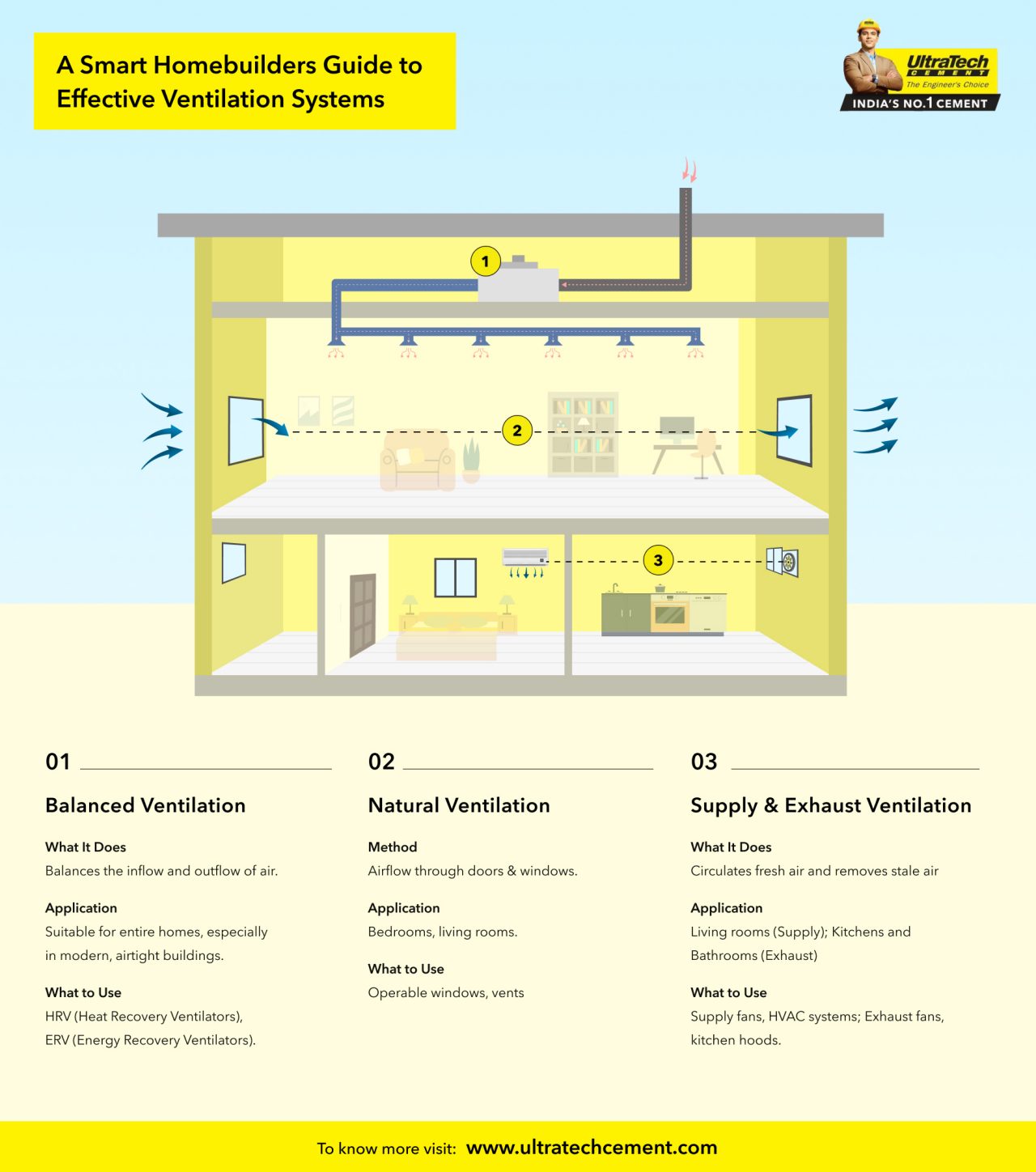The Science Behind Healthy Homes and Home Ventilation Melbourne
Recognizing the Importance of Home Air Flow for a Healthier Living Setting
Home ventilation plays a crucial role in keeping a healthy living environment. It promotes the exchange of indoor and outside air, which is very important for enhancing air high quality. Without appropriate ventilation, homes can come to be reproducing grounds for pollutants and irritants. The effects of poor air circulation can be considerable. This brings up the inquiry of just how homeowners can successfully execute air flow approaches to safeguard their wellness and wellness. Understanding these approaches is imperative.

The Essentials of Home Air Flow
Home air flow functions as a vital element of indoor air top quality and convenience. It includes the procedure of trading stale interior air with fresh exterior air, thereby minimizing moisture and regulating temperature level. Correct air flow systems can include natural approaches, such as open home windows and vents, along with mechanical systems, such as exhaust fans and air exchangers. Efficient home ventilation helps prevent issues like indoor mold growth and the accumulation of harmful bits. It likewise improves overall power effectiveness, as well-ventilated spaces can maintain comfortable temperature levels with much less dependence on heating and cooling systems. Understanding the essentials of home ventilation is essential for property owners seeking to develop a much healthier living atmosphere for themselves and their households.

Typical Sources of Indoor Air Air Pollution

Although many may not realize it, interior air pollution can stem from numerous resources within a household. Usual contributors include unstable natural substances (VOCs) produced from paints, solvents, and cleaning items. House appliances, such as gas cooktops and fire places, can release hazardous gases like carbon monoxide gas and nitrogen dioxide. Furthermore, mold and mold thrive in wet areas, releasing spores that influence air quality. Animal dander, dirt termites, and plant pollen can gather indoors, further intensifying pollution degrees. Smoking cigarettes inside generates hazardous chemicals that remain airborne. Developing materials, consisting of asbestos and formaldehyde, can off-gas hazardous compounds. Recognizing these resources is essential for keeping a much healthier interior setting and advertising reliable air flow strategies.
Health Effects of Poor Air Flow
Indoor air contamination can have significant health effects, especially when air flow is poor. Poor air flow can cause the buildup of harmful toxins, such as unstable natural substances, mold, and particulate matter. This accumulation might result in breathing issues, consisting of bronchial asthma, allergic reactions, and chronic obstructive pulmonary disease. People might experience signs and symptoms like i was reading this headaches, tiredness, and irritation of the eyes, nose, and throat. At risk populations, such as children and the elderly, are at greater threat for severe health and wellness impacts. Long-term direct exposure to inadequately aerated environments can also add to more major conditions, including heart diseases. Subsequently, guaranteeing appropriate air flow is necessary for preserving a healthy living atmosphere and minimizing the threat of health and wellness problems connected with interior air contamination.
Efficient Ventilation Methods for Your Home
Appropriate ventilation is essential for keeping a healthy interior atmosphere, and executing reliable methods can greatly boost air quality. Home owners can start by guaranteeing that exhaust fans are set up in shower rooms and kitchen areas to get rid of excess wetness and odors. Opening up home windows regularly permits fresh air to circulate, specifically during moderate weather condition. Furthermore, making use of air cleansers with HEPA filters can help catch airborne toxins. For homes with home heating and cooling systems, maintaining a/c systems and transforming filters regularly is crucial for peak efficiency. Including all-natural ventilation strategies, such as cross-ventilation, can likewise enhance air flow. Securing any leaks in doors and home windows protects against unwanted drafts, which can interfere with regulated air movement, inevitably leading to improved indoor air top quality and convenience.
Keeping Optimal Air Quality Year-Round
To keep excellent air quality year-round, homeowners should adopt a positive approach to managing their interior environment. Regularly keeping an eye on interior air high quality is important; this includes monitoring for contaminants such as dirt, mold, and volatile natural compounds (VOCs) Implementing efficient ventilation systems, such as exhaust followers and air cleansers, can greatly reduce air-borne pollutants. more info here Furthermore, routine upkeep of HVAC systems warranties peak efficiency and air flow. Homeowners should also think about humidity levels, as too much dampness can result in mold growth. Seasonal adjustments might require modifications in ventilation techniques to accommodate differing outside air quality. By focusing on these methods, house owners can develop a healthier home, advertising general well-being for all owners throughout the year.
Frequently Asked Questions
How Can I Inform if My Home Needs Better Air Flow?
To establish if a home needs better air flow, one ought to observe signs such as consistent moisture, mold growth, musty smells, condensation on windows, or raised allergy signs and symptoms, suggesting insufficient airflow and potentially bad indoor air quality.
What Are the Indications of Poor Indoor Air Top Quality?

Can Houseplants Improve Indoor Air High Quality Properly?
The efficiency of houseplants in enhancing interior air high quality is discussed. While some researches suggest they can absorb toxic substances and create oxygen, their general impact may be marginal compared to correct ventilation and air purification systems.
Just how Often Should I Adjustment My Air Filters?
The frequency of air filter adjustments usually relies on usage and filter type. Normally, it is recommended to change filters every 3 months, though homes with pet dogs or allergic reactions may call for more constant changes for perfect efficiency.
Exist Any Type Of Certain Air Flow Systems for Allergy Sufferers?
Lots of ventilation systems, such as HEPA-filtered units, properly lower allergens in the air. Home Ventilation Melbourne. These systems catch dirt, pollen, and animal dander, offering allergic reaction victims with a cleaner, much healthier indoor environment while taking care Source of air high quality successfully
It promotes the exchange of interior and exterior air, which is vital for improving air quality. Home ventilation offers as a crucial element of interior air top quality and comfort. It involves the process of exchanging stagnant interior air with fresh outdoor air, thus lowering moisture and managing temperature. Indoor air pollution can have substantial wellness effects, specifically when air flow is insufficient. Appropriate ventilation is necessary for preserving a healthy and balanced indoor setting, and applying efficient methods can significantly enhance air high quality.